Leveraging on the people of Zimbabwe’s hospitality
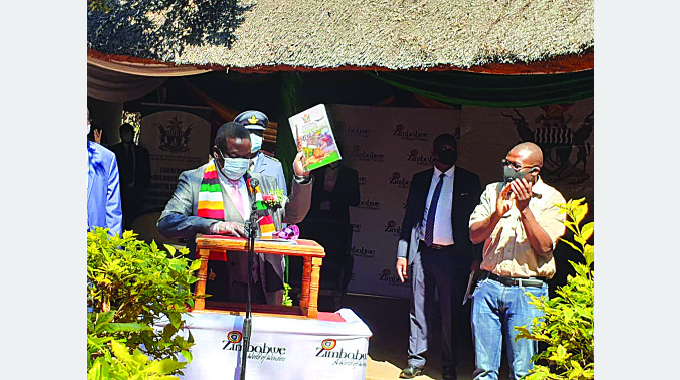
Elliot Ziwira Senior Writer
Zimbabwe is a beautiful country, not so much because it is home to one of the seven wonders of the world—the mighty Mosi-oa-Tunya (The Smoke that Thunders), known to the world as the Victoria Falls, her wildlife heritage or stunning scenery, but her people.
Zimbabweans are compassionate and hospitable people who can go the whole nine yards in accommodating visitors.
There is so much the people of Zimbabwe can give, so much more than meets the eye. However, there is one thing they cannot let go, for it is close to their hearts—their freedom—their sovereignty. But, that didn’t come on a silver platter. It was begotten of blood, violence, lead, iron, limb and sweat in a protracted engagement in the trenches of struggle.
No matter what happens, the people of Zimbabwe cannot simply overlook, even in their hospitable way, the tortuous journey they embarked on to reclaim their heritage, for hospitality is guided by ethos.
As the philosopher Jacques Derrida affirms, unconditional hospitality as an ideal is impossible. Hospitality is always informed by set conditions that clearly distinguish between the host and the guest, with the host reserving the right to stretch out his/her hand as can possibly be done, and withholding that which he/she considers non-shareable, even under duress.
Isn’t that what sovereignty means?
It is the right for a people to collectively determine their destiny leveraging on their ancestral heritage—the land, and all that it encompasses; wildlife, water bodies, rivers, mountains, forests, minerals and all that permanently grows on it.
Therefore, it is only appropriate to reflect on how the Second Republic under President Mnangagwa, has been able to ward off human and natural vagaries trained at the motherland, and create opportunities for citizens using their collective heritage, through the Ministry of Environment, Climate, Tourism and Hospitality Industry.
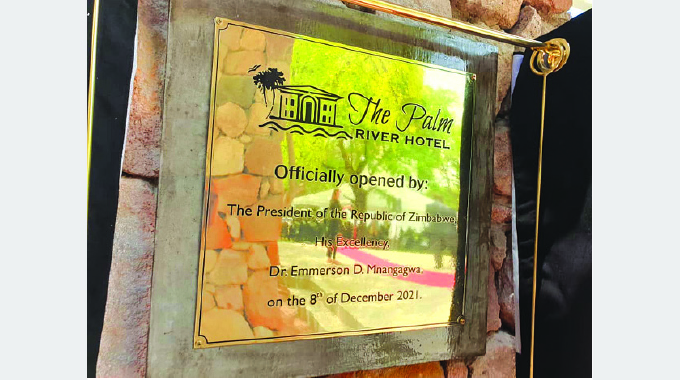
President Mnangagwa officially opened Palm River Hotel, Zambezi Boutique Hotel and Nkosi Guest Hotel in Victoria Falls in December 2021
Born in 2019, for purposes of synchronisation, the Ministry of Environment, Climate, Tourism and Hospitality Industry is headed by Nqobizitha Mangaliso Ndhlovu, with Barbara Rwodzi as Deputy Minister. The ministry’s Permanent Secretary is Munesushe Munodawafa.
The Ministry’s obligation is to promote best practices in environmental and natural resources management. To fulfil this mandate, it is inspired by the vision to become a leading regional player in sustainable and natural resources management for socio-economic development.
Its purposes are to plan, research and develop environmental and natural resources policies and legislation. The ministry is committed to the promotion of stakeholder and public participation in integrated programmes of environmental, forestry and wildlife management, as well as adoption of suitable and proven natural resources management techniques and viable use of the same on a sustainable basis.
Peeking into the colonial safari
Through colonial conquest, white Rhodesians took control of African resources, among them, wildlife. For close to a century, they held onto black people’s heritage basing their claims on mere pieces of paper dubiously called Title Deeds.
The philosophy of Title Deeds was informed by Eurocentric concepts of ownership, through which land can be sold, bought or owned. Using the same concept to turn land into a commodity, Rhodies fenced off vast expanses of the indigenous people’s land into conservancies, thus, taking ownership of their wildlife, a crucial part of their heritage as well.

Deputy Minister Barbara Rwodzi
Divested of their birthright, blacks lost their right to hunt or view their wildlife. They could only do so at the risk of arrest. Hunting safaris were a domain of white Rhodesians, who owned conservancies and had the money to embark on expeditions into natural wildlife habitats. Thus, settlers created a hunters’ paradise for themselves, with the word rancher being synonymous with whiteness.
With conservancies, hotels and safari operations under the ambit of white Rhodesians, and their proxies, black people were prodded out of the colonial enclosure, yet the wildlife was their heritage.
Organisations, like CITES (the Convention on International Trade in Endangered Species of Wild Fauna and Flora), play into colonial whim as they serve Western interests at the expense of Africans, who should be the ones calling the shots on how to run their conservancies. For instance, Zimbabwe is sitting on at least US$600 million worth of ivory, which the country cannot sell due to stringent rules set by those who have long lost their own wildlife heritage.
Embarking on the African expedition
Zimbabwe is home to many tourist attractions, chief among them being the Victoria Falls, Lake Kariba, Chilojo Cliffs, Chinhoyi Caves, Nyanga Mountain, and Great Zimbabwe.
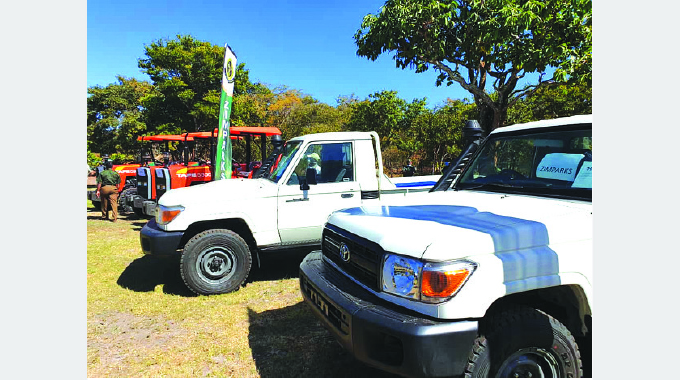
Some of the vehicles officially handed over by Minister Ndhlovu under the Zambezi Valley Biodiversity Project
The country has national parks such as Gonarezhou, Matusadona, Mana Pools, Hwange, Nyanga, and Matobo, as well as national shrines like the National Heroes Acre in Harare.
It has over 76 mammal and 650 bird species attracting over a million international and domestic visitors, and boasts of three UNESCO World Heritage Sites.
At Independence in 1980, the Government of Zimbabwe was not only seized with correcting colonial imbalances in the tourism sector, but ascertaining that the country was attractive to investors and visitors alike.
To that end, legislation was enacted as the basis for the African expedition that would take indigenous people aboard, and grow the tourism sector without destroying the same heritage the journey was premised on.
Since Independence, the country’s tourism has experienced exponential growth.
According to the Zimbabwe Tourism Authority (ZTA) Tourism Trends & Statistics Report of 2018, between 1989 and 1999, tourist arrivals grew at an average rate of 17,5 percent, while receipts increased at an average rate of 18 percent in US dollar terms and 25 percent in Zimbabwean dollar terms, annually.
The expansion in tourism was necessitated by the Government’s commitment to the sector. The establishment of ZTA through an Act of Parliament, showed more than obligation on the part of the Government of Zimbabwe, but expressed the seriousness with which citizens’ concerns were held, since turning around the tourism sector would translate into economic growth with the common good being the ultimate winner. Since then, the ZTA has been effectively delivering on its mandate to Zimbabweans.
In 1986 the Harare Sheraton Hotel (now Rainbow Towers) was opened, thus giving an international flair to the tourism industry.
Independence opened up spaces for indigenous Zimbabweans in the tourism and hospitality sector. A new generation of tourism facilities, like lodges and hotels, owned and managed by Zimbabweans, came into being across the country as more opportunities were created for citizens.
Whereas in colonial Rhodesia the management and ownership of hotel facilities was a domain for whites, Independence evened the playing field. Avenues were also opened in tour operations.
The Rainbow Tourism Group is such a pride of what it means to be Zimbabwean.
Investment opportunities were created in wildlife management following the post-2000 Fast Track Land Reform Programme, which tilted the scales in favour of blacks, who were/are now able to invest in conservancies and hunting safaris. Examples in this category are Khanondo, Wenhau, Matetsi, Bubi and Dande.
In line with its obligation to citizens, in 2010, Zimbabwe established a fully-fledged Ministry of Tourism and Hospitality (now the Ministry of Environment, Climate, Tourism and Hospitality Industry).
In 2018, the Zimbabwe Council of Tourism (ZCT) formed in 1988 to give a voice to operators in the travel and tourism sector, changed its name to the Tourism Business Council of Zi]mbabwe (TBCSZ).
Zimbabwe Parks and Wildlife Management Authority manages five million hectares of land or 13 percent of Zimbabwe’s total land area. The Authority’s obligation is to manage the entire wildlife population of Zimbabwe, whether on private or communal lands.
The country’s wildlife-based tourism product was projected to be a US$5 billion industry by the end of 2020.
The Department of Immigration came on board through its announcement of a new visa regime in 2018. The policy shift saw citizens from 28 countries being allowed to obtain visas upon arrival. As a result tourist arrivals increased, particularly from India and Ethiopia.
Government’s efforts paid off as the sector has grown in leaps and bounds over the past 40 years.
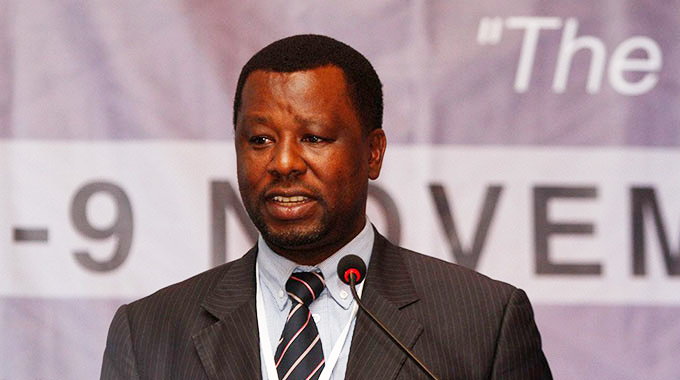
Permanent Secretary Munesushe Munodawafa
According to the ZTA’s Tourism Trends & Statistics Report (2018), tourist arrivals into Zimbabwe reached 2 579 974 in 2018, up from the 2017 figure of 2 422 930, translating to a six percent growth. The report reveals that the surge in tourist arrivals is estimated to have generated US$1,051 billion; a 15 percent gain on the US$918 million amount recorded in 2017.
Domestic tourism, as the report indicates, generated an estimated US$335 million during the same period, thus bringing overall tourism earnings in 2018 to US$1,386 billion.
Milestones on environmental management
On the environment front, the Government of Zimbabwe made significant inroads since 1980. The Environmental Management Act (20:27) was enacted to provide for the management of natural resources and protection of the environment. The Act also provides for the prevention of pollution and environmental degradation.
Other laws passed to protect Zimbabwe’s natural resources are the Parks and Wildlife Act (20:14) and the Forestry Act (Chapter 19:05).
The Establishment of the Environmental Management Agency (EMA), as provided for by the Environmental Management Act, as a fully-fledged authority in 2007, changed the landscape. In 2017 EMA banned the use of polystyrene material, commonly known as kaylite and related plastic packaging to curb health hazards and pollution.
In 2016, the Agency fined the Harare City Council $10 000 for polluting the environment and engaging in practices harmful to the health of residents. Harare was ordered to provide enough bins and waste containers as well as clear all its waste dumps.
To protect the environment, it is illegal to engage in construction activities in Zimbabwe without the environmental Agency’s approval.
Use of harmful pesticides was also outlawed.
Another milestone set pertaining to waste management, prevention of pollution and fostering a culture of cleanliness among citizens, is the on-going national clean-up campaign launched by President Mnangagwa in 2018.
In 2021 the ministry developed a wetland management framework, which saw a series of physical and virtual regional and consultative meetings being held with stakeholders. The meetings led to the development of a wetlands policy. Still on wetland management, a comprehensive National Wetlands Master Plan with Zimbabwe National Wetlands Map was produced.
The ministry was also supported by Vice President Chiwenga in the restoration of wetlands.
The National Tourism Recovery and Growth Strategy
In August 2020, the President launched the National Tourism Recovery and Growth Strategy to reboot the sector following the devastating impact of the Covid-19 pandemic on global economies, including Zimbabwe’s.
The plan hinges on the country’s vision to be an international tourist destination of choice, pivoting on prudent and sustainable use of its natural heritage, comprising culture and wildlife.
As the country poised itself for growth in the sector, in December 2021, the President officially opened three tourism facilities in Victoria Falls. The facilities are the eight-suite Zambezi Boutique Hotel, 24-roomed Nkosi Guest Hotel, and Palm River Hotel with 73 rooms.
Keeping pace with climate change
Like any other country, Zimbabwe has not been spared by shifts in climate. However, the country has made strides in the fight by working towards establishing the National Climate Policy following finalisation of the draft National Climate Change Response Strategy. The draft followed extensive public consultations to allow citizens to contribute to the process of developing a comprehensive action plan on aspects of climate change.
The process of developing the National Climate Change Response Strategy started in 2012 with the Institute of Environmental Studies at the University of Zimbabwe leading.
To get input on how best the country could come up with comprehensive and strategic approaches on climate change adaptation, mitigation, appropriate technology, public awareness and financing, consultative workshops were held countrywide.
Some of the milestones achieved in environmental protection, climate resilience and natural resource management in 2021 are a conservation project for the San community in Tsholotsho South in Matabeleland North. Under the scheme, five recruits, against a target of six, were recruited by the Zimbabwe Parks and Wildlife Management Authority in July 2021 to facilitate the participation of their community in conservation programmes.
Also, three members of the San Community were enrolled at the Zimbabwe Institute of Wildlife.
Furthermore, 255 146 trees were planted in Hurungwe, Mashonaland West Province, as well as Mbire and Muzarabani in Mashonaland Central Province.
Under the project, 91 818 trees were planted in Hurungwe, 10 048 in Mbire and 153 280 in Muzarabani.
First Lady: Passionate patron for environment
The ministry partners the First Lady Dr Auxillia Mnangagwa, who is the country’s Patron for Environment and Tourism and Wildlife Ambassador, in national clean-up campaigns, tree planting programmes and the traditional meal cookout competition.
The First Lady is passionate about the environment, and committed to the growth of the tourism sector through stakeholder engagement for the benefit of all the people of Zimbabwe.
She initiated the traditional meal cookout competition, whose second edition held in Victoria Falls on May 25, thrilled Sadc ministers, with lip-smacking indigenous dishes on display. The event was hosted by the Ministry of Environment, Climate, Tourism and Hospitality Industry in support of the First Lady’s vision to promote Zimbabwe’s traditional dishes because of their high nutritional value.
Dr Mnangagwa has also written a cookbook, “Cooking with Amai: Zimbabwean Traditional Cuisine Cookbook”, which immortalises recipes from the country’s 10 provinces.
Mid-Zambezi Valley Biodiversity Project
The ministry has intensified conservation efforts and up-scaled anti-poaching activities in the wake of increased poaching attempts as the Covid-19 pestilence hits global economies.
To that end, in June 2020, Minister Ndlovu officially handed over the Zambezi Valley Biodiversity Project Vehicles and Tractors to ZIMPARKS, EMA and CAMPFIRE.
The vehicles were handed over under the “Strengthening Biodiversity and Ecosystems Management and Climate-Smart Landscapes in the Mid to Lower Zambezi Region of Zimbabwe Project.”
The vehicles and tractors were purchased under the US$10, 025, 964 received from the Global Environmental Facility (GEF) 6 Cycle, and US$2 million from the United Nations Development Fund (UNDP), while the Government is co-financing the project through in-kind contributions.
This comes as human-wildlife conflict, illegal wildlife trade, deforestation, poaching and climate change impacts are rife, thus affecting communities, especially rural ones.
The project will come handy in biodiversity activities being implemented in Hurungwe, Muzarabani and Mbire districts.
The first batch of 15 vehicles was handed over in September 2019, and eight more tractors are expected to be delivered later this month.
CAMPFIRE Association and Zimparks took delivery of three vehicles each, while the Environmental Management Agency (EMA) got three tractors and one vehicle.
The project is envisaged to increase national capacity for illegal wildlife trade control, and integrated wildlife and woodland management; and improve capacity of protected area network and CAMPFIRE Wildlife Conservancies to protect globally significant biodiversity of the mid-lower Zambezi Region over a total area of 1 616 900 hectares.
Moreover, it is expected to increase the area under sustainable management and benefit local communities from community-based wildlife management, sustainable forest use, and viable land management in established community wildlife conservancies.
Lastly, lessons drawn from the scheme through participatory monitoring, evaluation and gender mainstreaming will be used nationally and internationally.
Commissioning of Allied Timbers Zimbabwe equipment
In July 2021, the President, represented by Defence and War Veterans Affairs Oppah Muchinguri-Kashiri, commissioned state-of-the-art equipment at Allied Timbers in Mutare produced under the Belarus facility from Afrtrade DMCC.
The US$7,08 million equipment was part of the State-owned entity’s recapitalisation. It included four air-conditioned dump trucks for road graving, seven 30-tonne trucks, one low-bed carrier trailer, six semi-trailers, 30 motorbikes and 10 drop-side trucks.


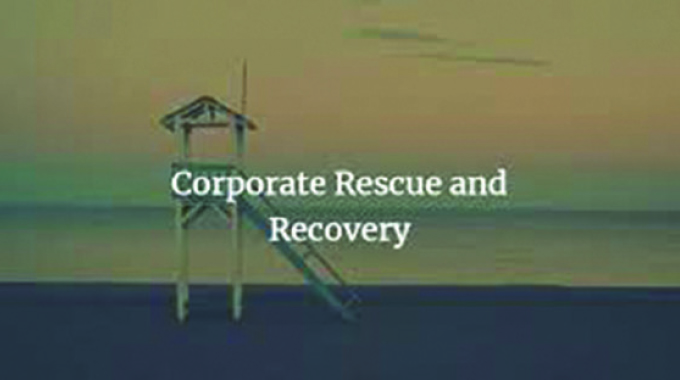
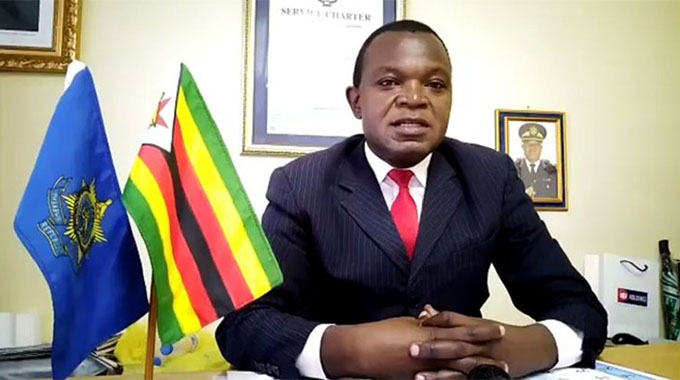



Comments